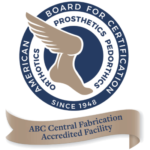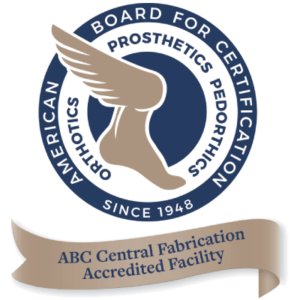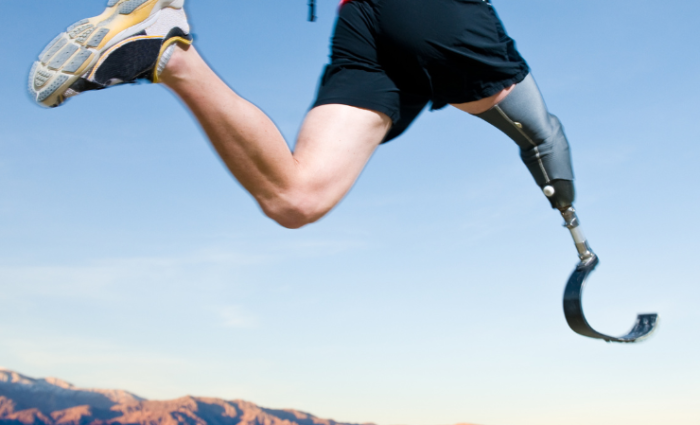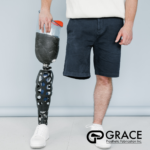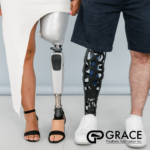What are some of the latest technological advancements in prosthetic fabrication?
The development of custom prosthetics has improved and seen remarkable advancements in recent years, driven by cutting-edge technology and innovative approaches to custom prosthetic fabrication. These developments are not only enhancing the functionality and comfort of prosthetic devices but also significantly improving the quality of life for individuals who rely on them.
In this guide, we will explore the latest technology in custom prosthetics, highlighting key innovations and their impact on prosthetic users.
The Evolution of Custom Prosthetics
Prosthetic devices have come a long way from their rudimentary beginnings. Today, the focus is on creating custom prosthetics that are tailored to the specific needs and preferences of each user. Advances in technology have played a pivotal role in this evolution, enabling more precise, functional, and aesthetically pleasing prosthetic solutions.
Advanced Materials for Enhanced Performance
One of the significant advancements in custom prosthetic fabrication is the use of advanced materials. Traditional prosthetics were often made from heavy and uncomfortable materials. However, modern custom prosthetics utilize lightweight, durable materials such as carbon fiber and advanced polymers.
These materials not only enhance the strength and durability of the prosthetic but also improve comfort and ease of use.
3D Printing: Revolutionizing Custom Prosthetic Fabrication
3D printing technology has revolutionized the field of custom prosthetics. This technology allows for the creation of highly customized prosthetic prototypes with unparalleled precision.
Here’s how 3D printing is making a difference:
Customization
3D printing enables the creation of prototype prosthetics that are tailored to the exact specifications of the user’s residual limb. This level of customization ensures a perfect fit for the final device, reducing discomfort and improving functionality.
Rapid Prototyping
The ability to quickly produce prototypes using 3D printing accelerates the design and fitting processes. Prosthetists can create and test multiple iterations in a short period of time, ensuring the final product meets the user’s needs.
Cost-Effectiveness
3D printing can significantly reduce the cost of custom prosthetic fabrication. The technology minimizes material waste and lowers production costs, making high-quality prosthetics more accessible.
Bionic and Myoelectric Prosthetics: Mimicking Natural Movement
Advancements in bionic and myoelectric technology are transforming the capabilities of custom prosthetics. These prosthetics are designed to mimic natural limb movement, providing users with greater control and functionality.
Myoelectric Prosthetics
Myoelectric prosthetics use electrical signals generated by the user’s muscles to control the prosthetic limb. Sensors detect these signals and translate them into movements, allowing for more natural and intuitive control. This technology is particularly beneficial for upper limb prosthetics, enabling users to perform complex tasks with greater ease.
Bionic Limbs
Bionic prosthetics take technology a step further by integrating advanced robotics and artificial intelligence. These prosthetics can perform a wide range of movements, closely mimicking the functionality of a natural limb. Some bionic limbs even incorporate sensory feedback, allowing users to feel sensations such as pressure and temperature.
Osseointegration: A Breakthrough in Custom Prosthetic Attachment
Osseointegration is a groundbreaking technique that involves surgically attaching the prosthetic directly to the user’s bone. This method offers several advantages over traditional socket-based prosthetics:
- Stability: Osseointegrated prosthetics provide a stable and secure attachment, reducing the risk of slippage and discomfort.
- Improved Mobility: Direct attachment allows for a more natural range of motion and better weight distribution, enhancing mobility and reducing strain on the residual limb.
- Enhanced Sensory Feedback: Users of osseointegrated prosthetics often report improved sensory feedback, allowing for a more intuitive and responsive experience.
Smart Custom Prosthetics: Integrating Technology for Enhanced Functionality
Smart prosthetics are at the forefront of custom prosthetic fabrication, incorporating various technologies to improve the user experience and functionality.
Some features of smart prosthetics include:
- Bluetooth Connectivity: Enables users to connect their prosthetic to smartphones and other devices for remote control and monitoring.
- Adaptive Sensors: These sensors automatically adjust the prosthetic’s settings based on the user’s activity level and environment, providing optimal performance in various conditions.
- AI and Machine Learning: These technologies allow the prosthetic to learn and adapt to the user’s movements and preferences over time, offering a more personalized experience.
Contact Grace Prosthetic Fabrication to Learn More About Custom Prosthetic Fabrication
The latest technology in custom prosthetics is revolutionizing the way prosthetic devices are designed, fabricated, and used. From advanced materials and 3D printing to bionic limbs and smart prosthetics, these innovations are enhancing the functionality, comfort, and accessibility of prosthetic solutions.
Contact us today to learn more about our state-of-the-art custom prosthetic fabrication services and how we can help your patients achieve greater mobility and independence.
Contact Grace Prosthetic Fabrication for prosthetic device fabrication.

